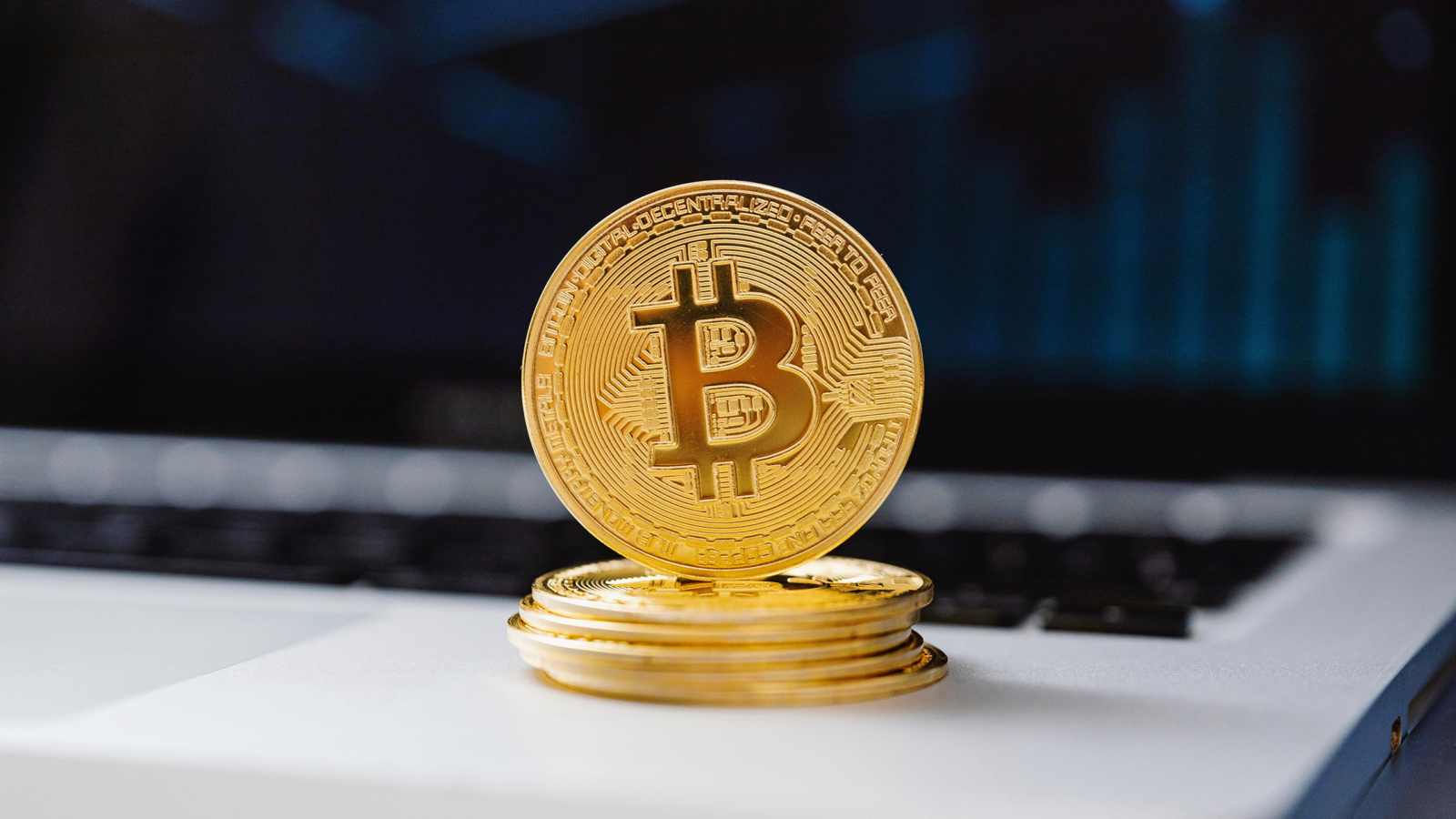Good morning and happy Wednesday.
How many tickles does it take to make a giant squid laugh?
Apologies, now is not the time for Kraken jokes. The famed crypto exchange of that name is actually quite serious, debuting commission-free trading on Monday for 11,000 US-listed stocks and ETFs, initially available for residents of a few states. Customers “can now seamlessly manage stocks, crypto, cash, and stablecoins, all in one place,” the company said. It’s the first time the company has jetted outside of crypto waters, and though the ink is barely dry on FINRA-registered Kraken Securities, it plans to extend stock and ETF trading to all US customers in phases. Clearly, it wants to be the biggest squid in the game.
So how many tickles does it take? Ten-tickles.
New Bitcoin ETFs Unveil Protection and Income Strategies

What do you get when you combine bitcoin with some of the biggest trends in ETFs?
It’s a brave new world for bitcoin-themed ETFs, a wave of new products that focus on income and outcomes rather than just exposure to the crypto asset or adjacent industries. One of the biggest names in the category, Grayscale, earlier this month launched two such products — a covered-call bitcoin ETF and a premium income ETF. Calamos this month launched another series of “protected” bitcoin ETFs that resemble buffered funds, following the debut of similar products in January. Two other issuers — Innovator and First Trust — have also brought protection-oriented bitcoin ETFs to market.
Investors and asset managers “like bitcoin, and they want to see what else it can do,” said Roxanna Islam, head of sector and industry research at TMX VettaFi. The new iteration of crypto ETFs “legitimizes bitcoin more and brings it further into the financial world.”
Bitcoin ETF 3.0
It’s been several years since bitcoin funds appeared in the US, with the first ones concentrating on bitcoin futures or bitcoin-adjacent businesses. Last year marked a monumental shift, with the first spot-price bitcoin ETFs being approved by the SEC. Demand is obviously there for the products with direct exposure — the biggest such fund, the iShares Bitcoin Trust ETF, represents about $48 billion in assets and has been recognized as the fastest-growing ETF ever.
The Calamos strategies, which represent most of the protected category, come in three flavors: one with 100% protection against losses and an upside cap of about 11%; another with 90% downside protection and a roughly 29% cap; and one with an 80% floor and a nearly 52% ceiling. The trios of ETFs it added in January and April have approximately one-year outcome periods.
“Market volatility serves as a reminder of the importance of risk management and downside protection,” Calamos CEO John Koudounis said in an announcement of the April ETFs, adding that the products enable “investors to remain confidently invested while mitigating the potential of bitcoin drawdowns.”
Data from VettaFi show:
- The six covered-call or options income bitcoin ETFs represent $400 million.
- The eight structured or protection-oriented bitcoin ETFs account for $119 million.
Happy Medium? A deterrent for many investors is bitcoin’s notorious volatility. Of course, anyone paying even a little attention to the stock market today knows that dramatic fluctuations are hardly exclusive to crypto. Buffer and covered-call ETFs have been big sellers, raking in a combined $20 billion in sales in the first three months of 2025. Extending the strategy to bitcoin might just be a sweet spot for some asset managers.
“The market is completely volatile,” Islam said. “It will be interesting to see the reception these April products get because of the different environment we are in.”
Direct Indexing’s Not Exactly an ‘ETF Killer’
It turns out the “ETF killer” thing might have been a stretch.
Direct indexing, an investment strategy that buys and holds stocks for clients directly in separately managed accounts, was expected to go toe-to-toe with the exchange-traded fund industry and even undercut much of the value of indexed products. By owning the underlying securities directly, the strategy gives clients the increased benefits of creating their own customized indexes and tailoring tax strategies. The threat was real enough for top assets managers, like Morgan Stanley, BlackRock Inc. and Vanguard Group Inc., to spend billions snapping up direct-indexing firms of their own.
But new research from Cerulli Associates is suggesting those fears may have been overblown. Just 18% of advisors used direct indexing last year, and 12% don’t even know what it is … awkward.
Get Rich Quick
Sure, the strategy has opened up new personalized indexes to investors, but it’s also a niche service that benefits super-wealthy investors the most. While direct-indexing assets closed 2024 at $864.3 billion, that’s still tiny compared with $9.4 trillion in ETFs, according to Cerulli. The reason could be that the benefits of direct indexing, like tax-loss harvesting, are more significant for the wealthiest clients that have the most tax liabilities. Without benefiting a broad range of investors, the popularity and growth of direct indexing may be muted, according to the report.
While asset managers have long feared the fast-growing direct-indexing marketplace, those fears may be fizzling out. “The gains one can realize on a small portfolio are by definition more limited,” said William Trout, director of securities and investments at Datos Insights. “While there are many advantages to direct indexing, and adoption by advisors and clients will grow over time, it’s not a silver bullet.”
In other bad news, advisory firms in the US are converting assets held in separately managed accounts into ETFs. According to a separate Cerulli report from this week:
- Assets held in all SMAs topped $2.7 trillion with more than half, or $1.6 trillion, in wirehouses and another $484 billion within the registered investment advisory channel.
- Yet just 45% of advisors report using separate accounts, compared with 90% using the ETF structure.
Educate Me. Advisors who have worked in SMAs before are far more comfortable articulating the benefits of direct indexing to clients, Trout said. Explaining concepts like tax-loss harvesting and capital gains deferral is no easy feat, especially if clients could potentially get hit with a tax bill by transitioning a client from a legacy portfolio. But advisors will slowly come on board, he said.
“The bottleneck here is really the financial advisor,” Trout told ETF Upside. “Education on the benefits of direct indexing is definitely needed for advisors to be able to sell it effectively.”
Gold ETF Inflows Top $8.6B in March

This golden hour is all day long.
Gold ETFs saw their fourth consecutive month of net inflows in March, totaling $8.6 billion, with 61% coming from North America. The investments pushed total assets under management to a record $345 billion, according to the World Gold Council. Gold has always been a safe haven, but with equity markets rattled by US tariff policies and growing fears of a global trade war, investors are looking to “them thar hills” for stability.
“Gold posted the strongest quarterly returns since 1986, and that momentum has continued into April, largely due to US trade and tariff uncertainty,” said Aakash Doshi, global head of gold strategy at State Street Global Advisors.
Extra Upside
- Eh First: First spot-Solana ETFs launch in Canada.
- Wind in the Sales: First quarter ETF sales are a record $298 billion.
- The World in Funds: Single-country ETFs provide geographic diversity.
ETF Upside is written by Emile Hallez. You can find him on LinkedIn.
ETF Upside is a publication of The Daily Upside. For any questions or comments, feel free to contact us at etf@thedailyupside.com.
